IE University and Hermès Establish Educational Partnership to Reimagine the Pony Club Experience
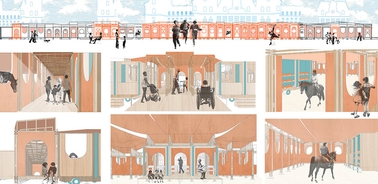
In 2024, students from the IE School of Architecture and Design presented sustainable, craft-inspired concepts for a nomadic pavilion.
IE School of Architecture and Design and Hermès have joined forces to inspire talent, innovation and creativity through a unique design challenge linked to Saut Hermès, the prestigious international equestrian competition whose 2025 edition was recently held in Paris. With this goal, students from the Bachelor in Architecture were invited to design a nomadic Pony Club pavilion, an architectural concept that reflects La Maison Hermès' identity and values.
The journey began last September, when a group of students traveled to Paris to live an immersive day at Hermès, where they explored various workshops—gaining firsthand insight into the unparalleled craftsmanship and creative excellence that define the brand. Following this introduction, the students embarked on a design process under the guidance of professors Romina Canna, Maxon Higbee, and Santiago Pradilla. Working in groups, they developed 14 innovative proposals centered on craftmanship, spatial and programmatic innovation, temporality, and sustainability. Each project envisioned a versatile, reusable structure capable of traveling and adapting to diverse environments.
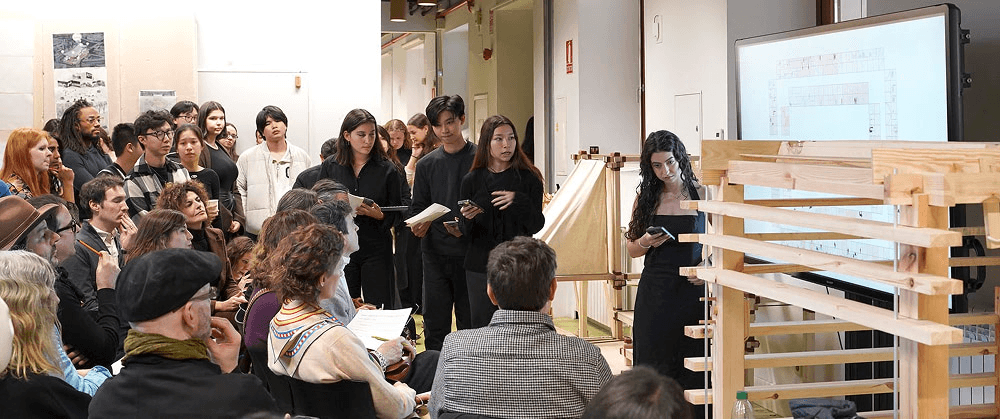 Students presenting projects to the jury. Photo: Roberto Arribas
Students presenting projects to the jury. Photo: Roberto Arribas The project culminated with a final presentation at the Segovia campus of the IE School of Architecture and Design. Hermès representatives in attendance included Christine Duvigneau, Director of Patrimoine des Dessins; Cosima Balsan, Director of Studio Dessins; Grégoire Diehl, Architecture Director; and Daniel Perez Barriga, Communications Director for Iberia. They were joined by external jury members Diego Martín Sánchez, Cristina Mampaso Cerrillos, Noemí Gómez Lobo, and José Aragüez Escobar, as well as faculty members Amaia Sánchez Velasco, Fernando Pino, Enrique Arenas Laorga, and Enrique Jerez Abajo.
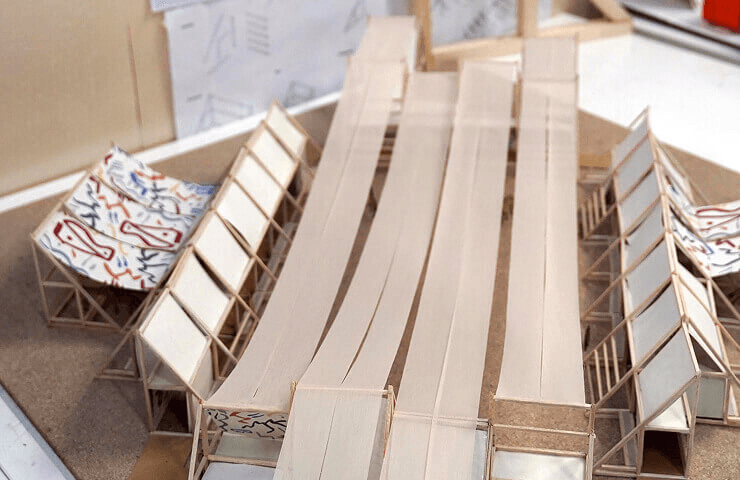
Romina Canna’s group focused on narrative, imagination, and engagement. Air Affairs by Maria Stathopoulou, Nicola Fatovic, Colin Martens, and Marta Garcia conceived a "globetrotter" pony club—portable, and assembled from prefabricated elements, and air-filled structural components. The Runway Tale by Maria Belen Romero, Stephanie Long, Meghan O’Sullivan, and Clara Dissert reimagined equestrian space as a staged urban performance inspired by fashion runways. Beyond the Void by Mahak Shivnani, Howard Budihartono, Sophia Malek, and Malena Gronda proposed a peripatetic structure with modular and movable elements. Liminal Trifecta by Regina Garibay, Antonia Liehr, Anna Levesque, and Aisha Rahmanova designed a playful, frame-based club filled with swings, bleachers, and interactive features. The Spaces In Between by Arianna Moncayo, Melanie Sauter, José Díaz, and Sergio Tascón envisioned a flexible, mobile village combining paddocks with educational and gathering spaces.
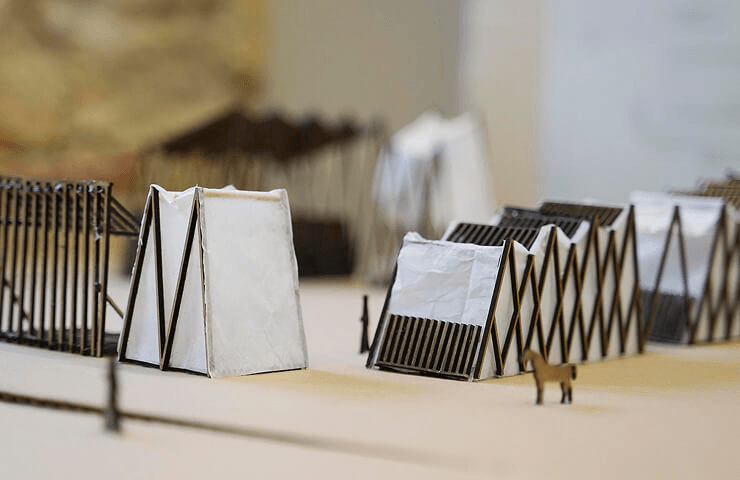
In Maxon Higbee’s group, students explored urban adaptability and mobile design. Adaptive Frames: Instant Equestrian Club by Lee Kihoon, Sofi Mihajlovic, Kieran Tan, and Sofiia Kalmykova proposed a foldable pony club deployable in iconic public spaces. Blurring Boundaries by Marta Freire, Mariana Garcia, Micaela Torres, and Hana Kamel examined modular construction and contextual adaptability. Peek-a-Boo Pony Club by Maria Camarero, Elaine Bauknecht, Sebastian Martinez, and Kathleen Yang designed playful, shifting architectural elements to spark interaction. Reins by Fernando Muñoz, Juliana Rodriguez, Jie Ping Tan, and Ana Victoria Sanchez employed rope-based systems and lightweight materials to explore spatial fluidity. Views in Flux by Akrapong Kiatkongchayin, Genevieve Young, Noor Matalka, and Sophia Kluijfhout shifting light, materials, and user interaction to alter spatial perception.
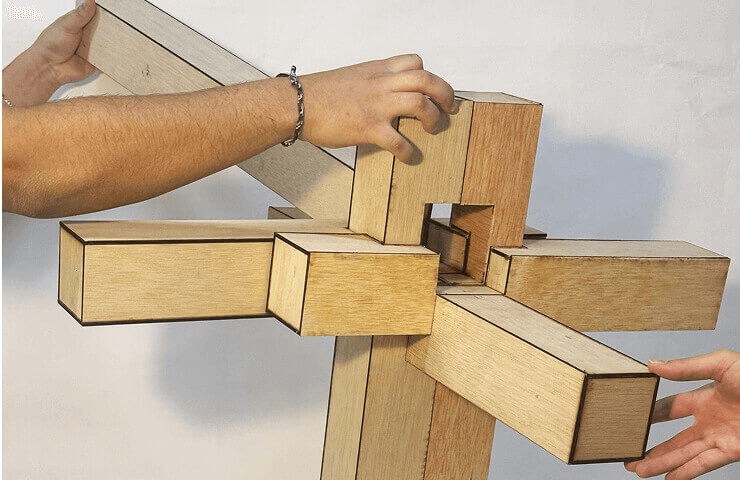
In Santiago Pradilla’s group, students prioritized materiality and spatial articulation. Walls of Wonder by Idil Yilmaz, Nina Moynet, Arturo Cruz, and Alaa Belal used repeated handcrafted wall modules to create immersive, layered environments for different user groups. Le Manège Mélodique by Sofia González, William Tan, Alejandro Llorente de Frutos, and Omar Kenzhebekov presented a modular, adaptable club focused on clarity and inclusivity. Canopy by Michaela Zavacka, Catalina Lozano, Sean Parker, and David Moore developed a truss-based, transportable pony club responsive to urban movement and gathering. Finally, Reinventing the Paddock by Martina Amores, Natalia Grigoras, Loulwa Karaki, and Minh Nguyen transformed the entire site into a flexible paddock using a pulley-operated roof system, redefining the boundaries of equestrian architecture.
* The image on the cover belongs to the project "Beyond the Void" by students Mahak Shivnani, Howard Budihartono, Sophia Malek, and Malena Gronda.